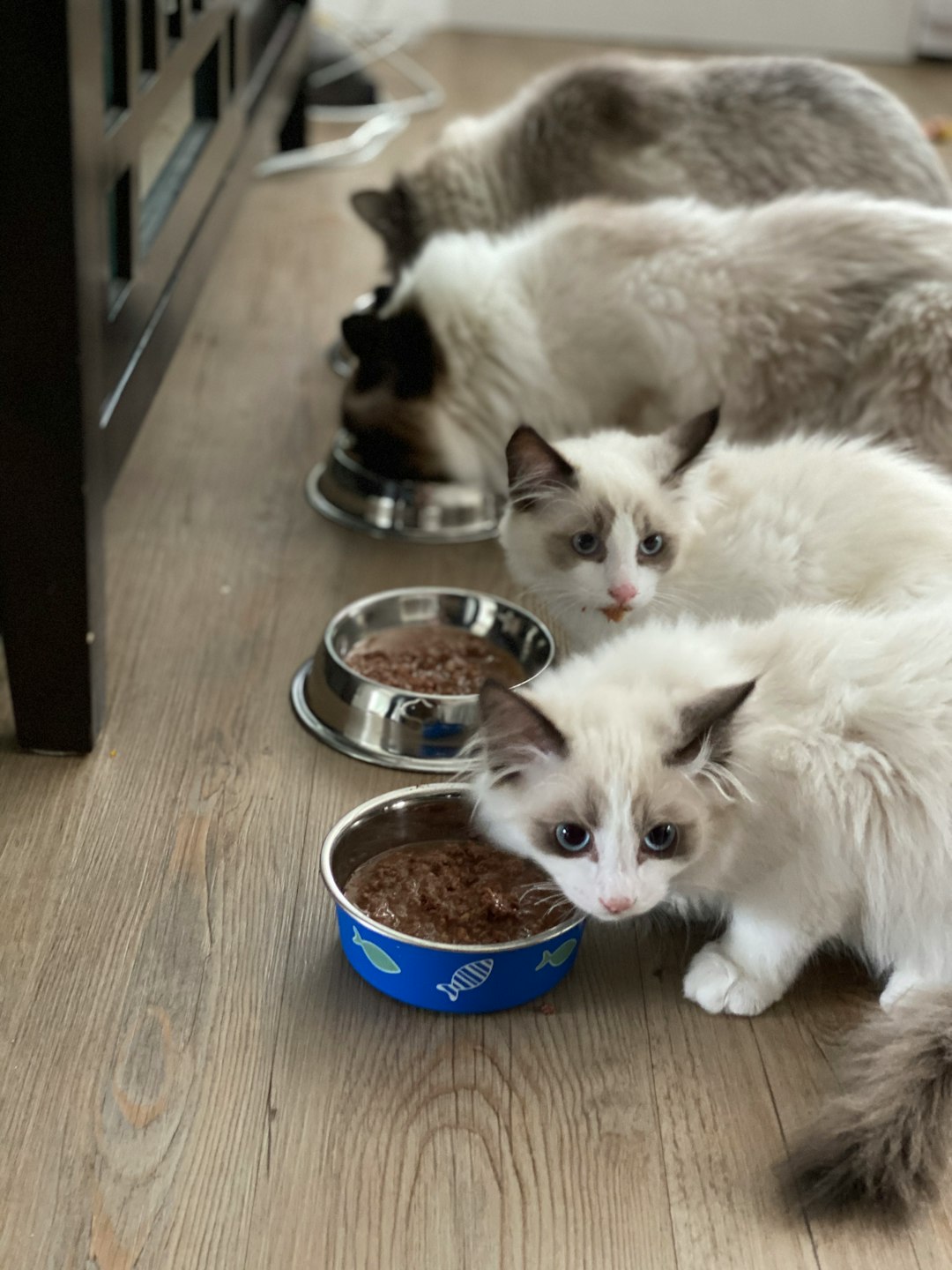Understanding the health and well-being of our feline friends is crucial for any responsible pet owner. One often overlooked issue is the potential for a blocked cat converter, which can lead to significant discomfort and health challenges for your cat. Recognizing the blocked cat converter symptoms early on is essential for effective intervention and treatment. In this blog post, we will explore what a blocked cat converter entails, how to identify the warning signs, and the importance of timely diagnosis and care. By being attentive to your cat’s physical behavior, litter box habits, appetite, and potential respiratory issues, you can help ensure that your beloved pet stays happy and healthy. Join us as we delve into this important topic and learn how you can take proactive steps to support your cat’s well-being.
Understanding Blocked Cat Converters
What is a Cat Converter?
A cat converter, in the context of feline health, refers to the cat’s internal organs, specifically the urinary tract system responsible for filtering and excreting waste. It’s pivotal for maintaining overall well-being. When functioning correctly, the cat converter efficiently promotes kidney health and regulates electrolytes. However, when impeded, it can result in serious health conditions.
Common Causes of Blockages
Numerous factors may lead to a blocked cat converter. Understanding these causes is essential for preventative care. Here are some common causes presented in a table format for clarity:
| Cause | Description |
|---|---|
| Urinary Stones | Mineral deposits that form and accumulate, causing obstruction. |
| Inflammation | Inflammation of the urinary tract can narrow pathways, leading to blockages. |
| Tumors | Abnormal growths may obstruct urinary flow and lead to significant distress. |
| Infections | Bacterial or viral infections can result in swelling and blockages |
Recognizing these causes enables early identification of blocked cat converter symptoms, facilitating timely intervention. Proper awareness can help cat owners monitor their pets effectively, leading to better health outcomes.
Recognizing the Symptoms of a Blocked Cat Converter
Identifying the blocked cat converter symptoms early is crucial in ensuring your feline friend receives the appropriate care. Understanding these symptoms can aid in preventing severe health implications. Below are key signs to look for in your cat’s behavior and health.
Physical Symptoms to Observe
When a cat’s converter becomes blocked, its body may exhibit noticeable physical signs. Pay attention to the following:
| Symptom | Description |
|---|---|
| Vomiting | Repeated or persistent vomiting often indicates distress. |
| Lethargy | A lack of energy or playfulness can signal health issues. |
| Abdominal Pain | Sensitivity or swelling of the abdomen during touch. |
| Constipation or Diarrhea | Irregular bowel movements can indicate blockage. |
These symptoms may seem benign at first but require prompt veterinary attention.
Performance-Related Symptoms
Changes in your cat’s overall performance and behavior are significant indicators of a blockage. Look for these signs:
| Symptom | Description |
|---|---|
| Decreased Activity | Reduced interest in play or regular movements. |
| Weight Loss | Unexplained loss of weight despite normal eating patterns. |
| Change in Vocalization | Increased or altered meowing can indicate discomfort. |
By observing these blocked cat converter symptoms, you can take proactive steps to seek veterinary guidance, ensuring your cat remains healthy and happy.
The Importance of Early Detection
Why Timely Action Matters
Early detection of a blocked cat converter is crucial for the overall well-being of your feline friend. Recognizing symptoms at the onset allows for prompt intervention, which can significantly improve the prognosis. When a cat experiences a blockage, it may exhibit signs such as lethargy, reduced appetite, or increased grooming. By being attentive to these early signals, you can seek veterinary care sooner and facilitate recovery.
To illustrate the benefits of early action, consider the following table:
| Symptom | Early Detection Outcome | Delayed Detection Outcome |
|---|---|---|
| Lethargy | Quick treatment and recovery | Severe health issues possible |
| Changes in litter box habits | Lower risk of complications | Increased risk of surgery |
| Decreased appetite | Restoration of health | Potential for multiple problems |
Potential Consequences of Ignoring Symptoms
Ignoring symptoms of a blocked cat converter can lead to serious health complications. A delay in treatment might not only extend the discomfort for your cat but also escalate the severity of the condition. This can result in acute kidney failure or a life-threatening situation.
Consider the major consequences of neglecting these signs:
- Increased Veterinary Costs: Early treatment is usually less expensive and involves less intensive care.
- Long-term Health Issues: Extended blockages can lead to chronic urinary issues or permanent damage to the urinary tract.
- Potential for Surgery: Many cases may escalate to the point where surgical intervention is necessary, which comes with its own risks and extensive recovery period.
By prioritizing early detection and recognizing the blocked cat converter symptoms, you ultimately safeguard your pet’s health and quality of life.
Physical Behavior Changes in Cats
Cats are creatures of habit, and any deviation from their typical behavior can signal underlying health issues, including a blocked cat converter. Observing your feline friend closely can provide crucial insights. Below are key behavioral changes to look out for:
Unusual Vocalizations
Typically, cats communicate through a range of vocalizations. However, if your cat suddenly begins to meow excessively or produces unusual sounds, it may indicate discomfort or pain. For instance:
| Behavior | Possible Causes |
|---|---|
| Increased meowing | Pain, stress, or irritation |
| High-pitched yowls | Severe discomfort, potential blockage |
These unusual vocalizations can be your cat’s way of expressing distress, and they should not be overlooked.
Increased Aggression or Anxiety
An increase in aggression or anxiety can also be a sign of an underlying issue. Cats may lash out or exhibit signs of nervousness when they feel unwell. Consider the following:
| Behavior | Potential Reasons |
|---|---|
| Hissing or swatting | Pain from a blocked cat converter |
| Hiding or withdrawal | Discomfort or anxiety due to pain |
By recognizing these physical behavior changes, you can be proactive in seeking veterinary guidance. Addressing these symptoms promptly is essential to ensure your cat receives the appropriate care needed to alleviate their discomfort and restore their usual demeanor.
Changes in Litter Box Habits
Understanding how a cat’s litter box habits change can be crucial for identifying blocked cat converter symptoms. Observing these shifts in behavior can enable you to react swiftly, ensuring that your feline receives the proper care. Below are a couple of notable changes:
Increased Frequency of Urination
Cats typically urinate several times a day, but an increase in frequency can be a warning sign. You may notice that your cat visits the litter box more often than usual, often producing only small amounts of urine. This pattern may indicate discomfort or issues with the urinary tract, potentially stemming from underlying health problems, including blocked cat converter symptoms.
| Symptoms | Description |
|---|---|
| Increased visits | Cat frequently goes to the litter box |
| Small urine output | Only a few drops or minimal amounts of urine |
Straining to Defecate
Another alarming change is straining while attempting to defecate. Your cat may repeatedly attempt to use the litter box but may only produce little to no feces. This behavior frequently signals a blockage or digestive distress, requiring prompt attention.
| Symptoms | Description |
|---|---|
| Straining behavior | Cat appears to struggle while defecating |
| Infrequent bowel movements | Less frequent trips to the litter box |
Recognizing these changes in your cat’s litter box habits can serve as an essential early indicator of health issues. Regular monitoring and timely intervention can significantly enhance your pet’s well-being.
Alterations in Appetite and Weight
Loss of Appetite
When it comes to identifying blocked cat converter symptoms, a noticeable loss of appetite can serve as a significant red flag. Cats are creatures of habit, and any sudden change in their eating patterns warrants attention. If your feline companion begins to show disinterest in food or only nibbles at their meals, it could indicate either stress or a medical issue, such as a blocked cat converter that restricts food intake.
| Signs of Loss of Appetite | Description |
|---|---|
| Decreased food intake | Eating less than usual or skipping meals. |
| Preference for soft food | Selecting only soft or wet food instead of dry. |
| Increased pickiness | Rejecting previously enjoyed food. |
Weight Loss Due to Illness
Weight loss is another concerning symptom associated with a blocked cat converter. If your cat is losing weight rapidly without any dietary changes, this may signal an underlying health issue. Such weight loss can occur due to various factors, including nausea, pain, or changes in metabolism stemming from a blocked cat converter.
| Factors Contributing to Weight Loss | Common Symptoms |
|---|---|
| Reduced food consumption | Lethargy |
| Increased vomiting | Dehydration |
| Abnormal digestion | Behavioral changes |
In summary, alterations in appetite and weight can significantly affect your cat’s health. Observing these changes early on can lead to timely medical intervention, improving your pet’s overall well-being.
Respiratory Issues as Symptoms
Respiratory issues can be a critical indicator of a blocked cat converter. As the condition progresses, it affects your cat’s overall health, leading to discomfort and distress. Understanding these symptoms can be vital for prompt medical attention.
Coughing or Wheezing
Coughing or wheezing indicates that your cat may struggle to breathe properly. These symptoms are often linked to blockages, which can hinder airflow. In cats, the following factors may contribute to such respiratory distress:
| Symptom | Description |
|---|---|
| Coughing | This may appear as a dry cough, indicating irritation. |
| Wheezing | A high-pitched noise during exhalation can signify blockage. |
Cats may exhibit coughing or wheezing, especially after physical activity or during sleep. Observing your feline companion for these signs is crucial; if they persist, a veterinary visit is advised.
Labored Breathing
When a cat experiences labored breathing, it may indicate a serious underlying issue. This symptom can manifest as shallow or rapid breaths. Take note of the following indicators of labored breathing:
| Indicator | Significance |
|---|---|
| Increased effort | Your cat may appear to be exerting more effort to breathe, often seen with their chest expanding visibly. |
| Open-mouth breathing | If your cat starts to breathe with its mouth open, it could indicate significant distress. |
Both coughing and labored breathing can worsen over time. If you notice these blocked cat converter symptoms, it’s essential to consult a veterinarian promptly for a thorough assessment and potential interventions.
Diagnosing Blocked Cat Converters
Identifying a blocked cat converter early is crucial for your feline’s health. Diagnosing the issue typically involves a combination of thorough veterinary examination and specific diagnostic tests.
Veterinary Examination Recommendations
During your visit, a veterinarian will conduct a comprehensive examination of your cat. Key components of this assessment include:
| Examination Parameter | Description |
|---|---|
| Physical Exam | Assessing overall health, weight, and any visible distress. |
| Palpation | Feeling the abdomen for swelling or tenderness. |
| Breathing Assessment | Observing respiratory rate and effort for any abnormalities. |
Your vet may also inquire about your cat’s medical history and any recent changes in behavior or habits.
Diagnostic Tests to Consider
If your veterinarian suspects a blocked cat converter, they may recommend additional diagnostic tests to confirm the blockage. Here are some common tests:
| Test Type | Purpose |
|---|---|
| X-rays | To reveal any obstructions or abnormal masses. |
| Ultrasound | For more detailed images of internal structures. |
| Blood Tests | To check for kidney function and overall blood chemistry. |
These diagnostic measures will help identify the underlying cause of the blockage and assist in determining the appropriate treatment plan. Early diagnosis is essential, so if you observe any symptoms related to a blocked cat converter, consult your veterinarian promptly.
Treatment Options for Blocked Cat Converters
When it comes to addressing blocked cat converter symptoms, timely intervention is crucial for the well-being of your feline friend. Various treatment options are available, depending on the severity and cause of the blockage.
Medical Interventions
In less severe cases, medical treatment may be effective in alleviating symptoms and addressing the blockage. Below are some common medical interventions:
| Treatment | Description |
|---|---|
| Medications | Anti-inflammatories or pain relief medications can help ease discomfort. |
| Hydration Therapy | Ensuring your cat is well-hydrated can assist in flushing out the blockage. |
| Dietary Changes | Switching to a special diet that promotes urinary health might be recommended. |
Veterinarians may recommend a combination of these interventions based on your cat’s specific condition. It is essential to monitor their response closely.
Surgical Solutions
If medical interventions fail to relieve the blocked cat converter symptoms, a more invasive approach may be necessary. Surgical solutions can include:
| Procedure | Details |
|---|---|
| Cystotomy | A surgical procedure where the bladder is opened to remove the blockage. |
| Urethrostomy | Involves creating a new urinary opening to bypass the blockage permanently. |
| Surgical Removal of Stones | If the blockage is caused by urinary stones, they can be surgically removed. |
Surgery is often seen as a last resort but may be necessary for long-term resolution of severe blockages. Consult with your veterinarian to make an informed decision, ensuring your cat receives appropriate care tailored to its needs.
Preventative Measures for Cat Owners
Regular Health Check-ups
Routine veterinary visits play a vital role in preventing blocked cat converter symptoms. During these check-ups, a vet can detect early signs of health issues that may lead to blockages. Regular examinations help ensure your cat’s overall health and allow for timely interventions. Here’s a quick overview of what these check-ups may include:
| Health Aspect | Frequency | Purpose |
|---|---|---|
| General Physical Exam | At least once a year | To assess overall health and detect issues early |
| Urinalysis | Annually | To check for urinary tract problems |
| Blood Work | Every 1-2 years | To monitor organ function and detect abnormalities |
Dietary Adjustments to Prevent Blockages
Feeding your cat a balanced diet is essential for preventing issues like blockages. A diet rich in moisture and high-quality nutrients can significantly decrease the likelihood of health problems. Consider the following dietary tips:
- Water Intake: Ensure your cat has ample access to fresh water.
- Moisture-Rich Food: Incorporate wet food into your cat’s diet to increase fluid intake.
- High-Quality Protein: Choose foods high in protein without unnecessary fillers.
By making these dietary adjustments, you can proactively reduce the chances of your cat developing blocked cat converter symptoms. Regular monitoring of your cat’s eating habits can also offer insight into their overall well-being, leading to a longer and healthier life.
Frequently Asked Questions
What are the key symptoms of a blocked cat converter?
A blocked catalytic converter can cause a variety of symptoms that can significantly affect vehicle performance. The most common symptoms include a decrease in engine performance, manifesting as a lack of power during acceleration, which is often accompanied by stalling or rough idling. Drivers may also experience an unusual increase in exhaust emissions, leading to a foul smell, often resembling rotten eggs, due to excessive unburned fuel. Additionally, the vehicle might exhibit overheating as the engine struggles to operate efficiently, and a diagnostic trouble code may be triggered, illuminating the ‘Check Engine’ light on the dashboard.
How can I tell if my car’s catalytic converter is blocked?
Identifying a blocked catalytic converter typically requires a combination of observational checks and diagnostic tests. One of the initial indicators is a noticeable drop in acceleration and overall engine performance, especially when the vehicle is under load. A popular method to diagnose blockage includes a backpressure test, where a pressure gauge is connected to the exhaust system, revealing excessive pressure indicating a blockage. Additionally, a visual inspection of the catalytic converter may reveal physical signs of damage or excessive soot buildup. Lastly, utilizing an OBD-II scanner can help in identifying error codes related to catalyst efficiency, supporting the diagnosis.
What should I do if I suspect my catalytic converter is blocked?
If you suspect that your catalytic converter is blocked, the first course of action is to reduce driving the vehicle to prevent further damage to the engine. Then, it is advisable to take your car to a qualified mechanic for a thorough inspection and diagnosis. They can perform necessary tests, such as a backpressure test and visual inspection, to confirm blockage and ascertain the best course of action, which may involve cleaning or replacing the converter. Additionally, addressing any underlying engine issues contributing to the blockage, such as fuel or air intake problems, is crucial to prevent recurrence.
Can a blocked catalytic converter affect my vehicle’s fuel economy?
Yes, a blocked catalytic converter can significantly affect your vehicle’s fuel economy. When the exhaust flow is restricted due to blockage, the engine has to work harder to expel exhaust gases, which leads to increased fuel consumption. As the engine operates inefficiently under these conditions, drivers may observe a drop in miles per gallon (MPG), leading to more frequent visits to the gas station. This inefficiency not only impacts fuel costs but could also lead to further long-term issues requiring costly repairs, making it essential to address any signs of blockage promptly.
How can I prevent my catalytic converter from getting blocked?
To prevent your catalytic converter from becoming blocked, regular vehicle maintenance is key. This includes timely oil changes, replacing fuel and air filters, and ensuring your engine is running optimally to avoid excessive unburned fuel entering the exhaust system. Additionally, using quality fuel and avoiding short trips where the engine doesn’t reach optimal temperature can help in maintaining overall engine health. If you experience any engine misfires or issues, addressing them immediately can prevent unburned fuel from damaging the catalytic converter, consequently prolonging its lifespan.



